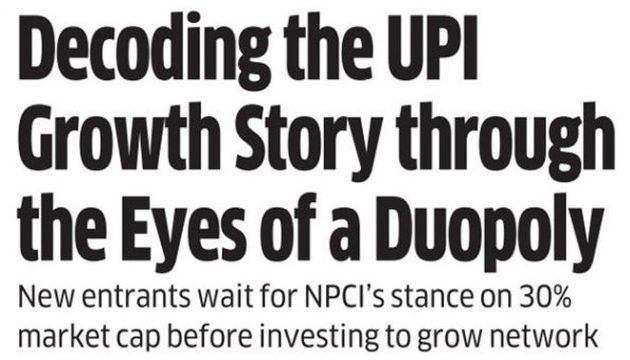OpenAI released GPT-4o yesterday. Pronounced “Four Oh”, the latest version of GPT combines audio, vision, and text in a single Large Language Model.
I got access to GPT-4o earlier today. (For the uninitiated, existing users of ChatGPT don’t have to look for any subscription / invitation link for 4o. As and when it’s enabled for them, they should see the above screen while they log into ChatGPT the normal way.)
I asked ChatGPT two questions.
Question 1: How do I deduct TDS on Google Ads invoices in India?
Answer: ChatGPT provides the standard TDS deduction process applicable for any random Indian company. Being a flaky process, Google Ads stipulates a different process for its invoices. While you can read its full answer here, ChatGPT makes no mention of Google’s process. More on the boilerplate and Google’s alternative processes in a bit.
Question 2: I know that 6o (Six Oh) is slang for “the place just behind you” and 5o (Five Oh) is slang for police. Is 4o slang for anything?
Answer: At first, ChatGPT didn’t get the connection between my question and the Four Oh in its version. When I supplied the link in a sub-question, it replied as follows:
“Ah, I see! In this context, GPT-4o is a playful or shorthand way to refer to GPT-4, the version of the AI model you’re interacting with. The “o” likely stands for “OpenAI,” the organization behind the development of the GPT models. So, in this specific context: “GPT-4o” = GPT-4 by OpenAI.” ChatGPT goes on to confidently claim that “4o is a clever way to denote the model while giving a nod to its creators.” You can read the full answer here.
This answer is very wrong.
The “o” in 4o actually stands for “omni”, which “gives a nod” to something else, namely, that it’s the first version of GPT that can “reason across audio, vision, and text in real time”. Now, I took that slug from OpenAI’s own website. It’s insane that GPT-4o, which has slurped billions of websites, hasn’t been trained on data from its own website!
Standard TDS Deduction Process
As Supplier / Seller, I submit an invoice for, say, 100 to the Buyer / Customer; he pays me 90; he does not give me any written explanation for the unpaid 10; I assume that the 10 is towards TDS but I have no proof of it.
Furthermore, I have no control over whether my customer remits the deducted 10 to Income Tax Department (ITD) or not. This causes two problems:
- Customer deducts TDS and does not remit it to ITD. While CA firms will keep quoting the bare act of Income Tax Act and insist that the deductor must remit the deducted TDS to the government by the fifth day of the following month, fact is, some customers don’t do it. When I file my company’s corporate tax return, the income tax portal does not show the effect of 10 since the customer has not remitted it to ITD. As a result, although I have already suffered TDS deduction of 10 at the hands of my customer, I still need to fork out 10 to the government because… my customer broke the law.
- Employers deduct TDS from salary of employees. While a vast majority of them remit the deducted amount to the government by the due date – or at least before the employee needs to file ITR – there are cases where a company gets into dire financial straits and fails to remit the deducted TDS to ITD. I’ve heard of this in the case of Kingfisher Airlines, which eventually went bust. It’s not only in India – back in the day, Uber USA was notorious for not depositing withholding tax with IRS although, in its case, I suspect it was because the company was allegedly run in a footloose fancy free cowboy manner in its early days rather than due to dire financial straits. In these cases, the employees need to pay tax again since ITD has not received the deducted TDS from their employers.
According to my CA firm, the High Court ruled that, if I’ve suffered TDS deduction at the hands of my customer / employer, ITD cannot subject me to TDS again. However, the way the income tax return filing portal works in practice, I cannot submit my IT Return unless I cough up the 10 bucks to ITD. More at How Do You Sue Software?.
Google Ads TDS Deduction Process
I’ve never been comfortable with the standard TDS deduction process described above. In order to protect my interest, I’ve been adding the following clause in the terms and conditions of my customer proposals for years:
Any shortfall in received amount from the invoiced amount will be treated as statutory tax deducted at source (TDS) unless otherwise specified by you in writing.
Google Ads has taken this to the next level by evolving an alternative process whereby it takes the full invoice value from the advertiser’s account and tells the advertiser to pay TDS from its own pocket to Income Tax Department, get proof, submit the artefact to Google, and collect the refund for the paid TDS. More at Startup India.
In my opinion, this is a very robust process and, if lawful, it should be standardized by the Income Tax Department across the board.
In fact, many companies have instituted a similar process for GST where the tables are turned between buyer and seller and many buyers tell the seller to pay GST from his own pocket and get it reimbursed by showing proof thereof.
Based on my datapoint of two questions, ChatGPT-4o has 100% hallucination rate.
It’s two strikes against ChatGPT-4o already. Three strikes and I’ll go back to GPT3.0. In nearly 15 months of using the old version, I’ve faced than 5% hallucination in it (all of them were summaries of my blog posts).
Seems like my conspiracy theory was not too far off the mark. AI industry has not defined AGI. DeepMind says AGI is not a single thing and proposes the concept of "levels of AGI". H/T @jeremyakahn https://t.co/NU2aLis095
— Ketharaman Swaminathan (@s_ketharaman) March 7, 2024
On a side note, there are various ways in which Artificial General Intelligence is defined, including some that might be left to the jury members in Elon Musk v. OpenAI / Microsoft trial to decide, but sentience is a common trait in all of them. Not that anyone is claiming the AGI feat for Four Oh but the utter lack of self-awareness demonstrated in ChatGPT’s answer to the second question above rules out GPT-4o as AGI.



